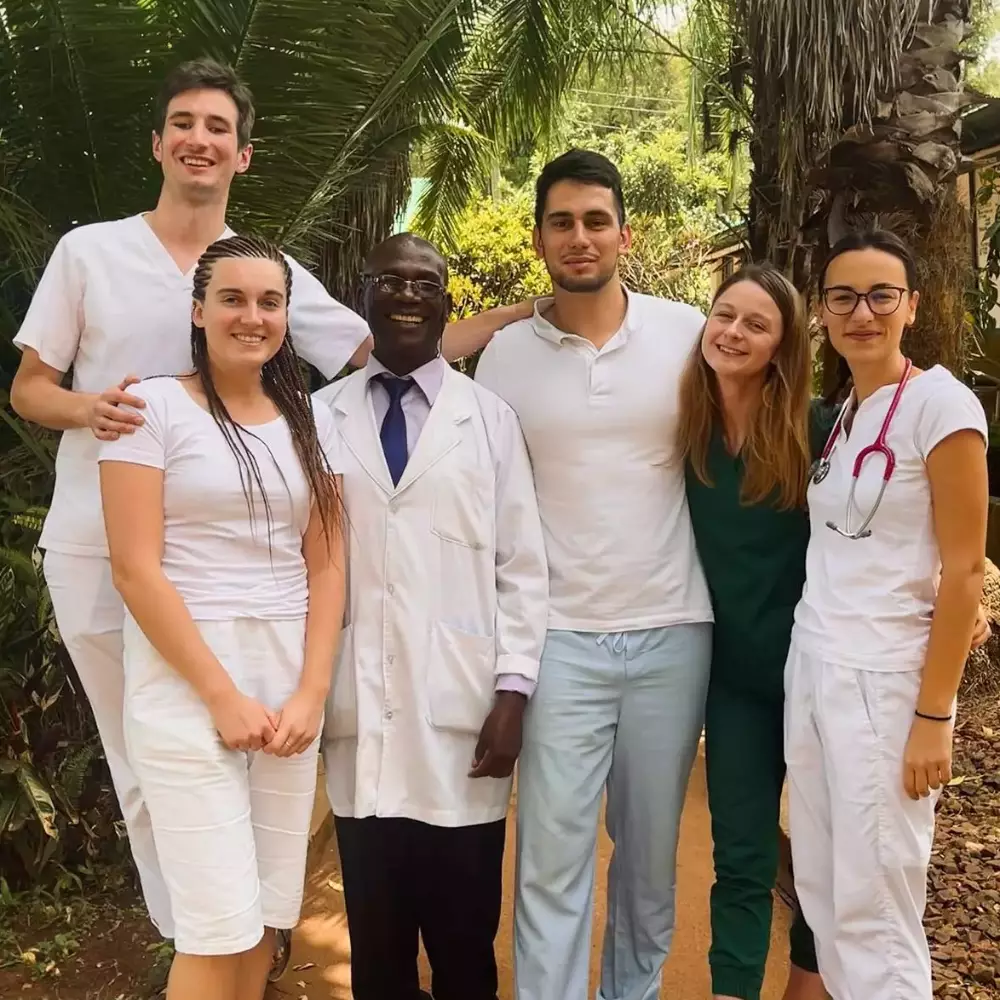Anesthesia on a humanitarian mission
This algorithm presents key challenges and approaches in anaesthesiology on humanitary mission. Its creators draw on their own experiences from foreign missions in various African countries. The solver has the opportunity to put themselves in the shoes of a young anesthesiologist who has to deal with the many obstacles associated with working in a developing country. He or she has the opportunity to learn how to prepare for such a mission and to discover the fundamental differences in the culture and health care provided in these countries. He will face challenging situations in which he will have to leave behind everything he has learned in his home country. In addition to good intuition and the ability to improvise, he will also have to prove himself in working with the local staff. Are you ready to go on this mission?
Review
Going on a humanitarian medical mission to the developing countries is not really „just an adventurous vacation“. It must be approached with full responsibility and diligence, and one should be prepared for all theoretically possible (and impossible) incidents.
We can never professionally venture into a new environment without knowledge of the context (security, health, labor legislation, religious, and language) of upcoming situation. We should be prepared for these specifics at home.
Medical procedures applied in developing countries essentially stem from the practices and standards we know from generally accepted „western“ clinical guidelines. Medicine and patients are the same everywhere, and therefore modifications of standard procedures are justifiable only in the face of personal and material limitations in a given situation. The ABCDE approach in trauma, procedures for difficult airway management, etc., are the same in equatorial Africa as they are in excellent trauma centers in Europe.
In the presented algorithm, you will find only basic guidance on how to deal with such a „work vacation“. However, be aware that these missions bring so many local specifics that it is impossible to create an algorithm that will be 100% applicable to all situations in developing healthcare.
Sources
VYMAZAL, Tomáš; MICHÁLEK, Pavel a KLEMENTOVÁ, Olga. Anesteziologie (nejen) k atestaci. 2., přepracované a doplněné vydání. Praha: Grada Publishing, 2023. ISBN 978-80-271-3898-2. [cited on 2024-03-24].
LARSEN, Reinhard. Anesteziologie. Translated by ASTAPENKO David, ČERNÝ Vladimír, DRÁBKOVÁ Jarmila et al. Praha: Grada Publishing, 2022. ISBN 978-80-247-2217-7. [cited on 2024-03-24].
ŠEBLOVÁ, Jana a MATĚJEK, Jaromír. Etika urgentní medicíny z pohledu každodenní praxe. Praha: Grada Publishing, 2023. ISBN 978-80-271-3007-8. [cited on 2024-03-24].
WebMD. Needle Stick Injury: What to Do? [online]. New York: WebMD, 2013-05-16. Dostupné z: https://www.webmd.com/hiv-aids/needle-stick-injury-what-do?fbclid=IwAR2eGfkLqOOpYm3LHGa-psQsdSUSF31JrJsKaugVrmD8krurGRCJrT8z4pM. [cited on 2024-3-24].
Intraoseální vstup (IOV) [online]. Brno: Masarykova univerzita, 2014. Dostupné z: https://is.muni.cz/el/1411/jaro2014/BZPN0433c/um/OSP_II_Pdf/Intraosealni_vstup__IOV_.pdf?lang=cs. [cited on 2024-3-24].
VYAS, V., SHARMA, A., GOYAL, S., KOTHARI, N. Infrared vein visualization devices for ease of intravenous access in children: hope versus hype. Anaesthesiology Intensive Therapy, 2021, vol. 53, no. 1, s. 69-78. DOI: 10.5114/ait.2021.103515. PMID: 33586417; PMCID: PMC10158443. [cited on 2024-03-24].
Learning targets
2. The student is familiar with potential challenges associated with working in a developing country.
3. The student masters procedures for the proper management of the risk of HIV virus infection.
4. The student respects and can consider local culture, traditions, and customs.
Key points
2. In the case of potential HIV virus infection, it is important to follow the recommendations of the World Health Organization (WHO).
3. The physician should be aware that they are working in a different culture and in a hospital with limited resources, including technical equipment and medications.





